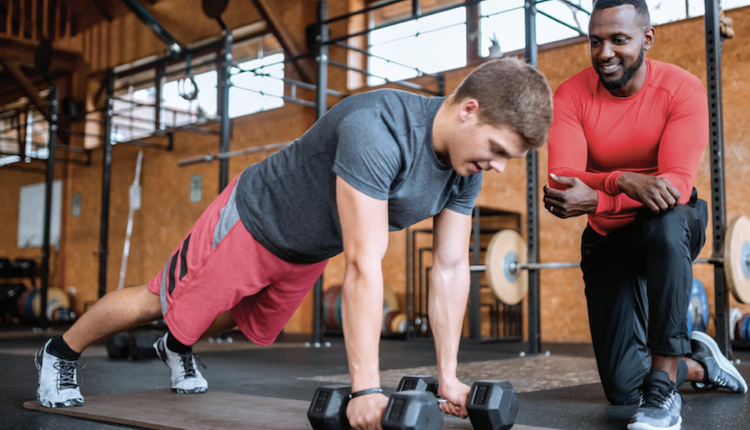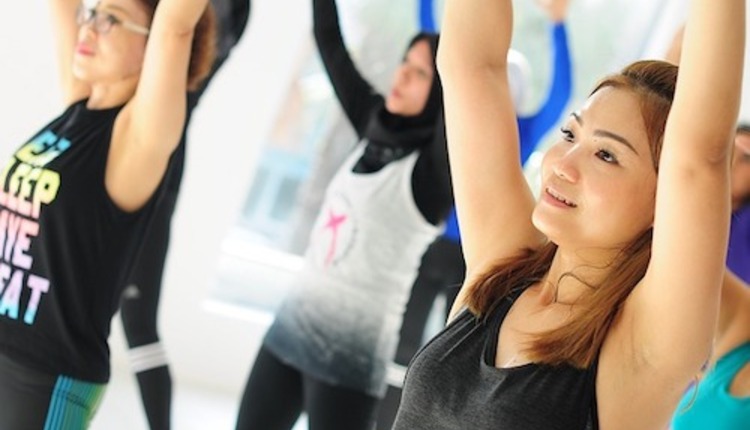Although gyms create a fish-out-of-water experience for many swimmers, physician and swimming expert Ian McLeod reveals that gym-based workouts actually give swimmers an edge over competition. "Without a doubt, swimming itself is the most effective way to become a better and faster swimmer, but several components outside the water play an important role in how you develop as a swimmer," says McLeod. In his new book Swimming Anatomy (Human Kinetics, October 2009), McLeod exposes the unique conditioning challenges aquatic athletes face, and shares the best workouts for overcoming those challenges.
Swimmers face hurdles that athletes in most land-based sports do not encounter, such as the total-body nature of all four competitive strokes which requires a coordinated effort within the musculoskeletal system. To visualize and strengthen this coordinated effort, McLeod suggests thinking of the body as a long chain and each body segment as a link in the chain. "Because all the segments are linked together, movement in one segment affects all the other segments. This linkage allows the power generated by the arms to be transferred through the torso to the legs. But if a link in the chain is weak, a loss of power transfer can occur, bodily movements can become uncoordinated, and the risk of injury can increase."
In addition to the full-body nature of swimming, water requires that swimmers create their own base of support. "Unlike land-based athletes, who have a stable surface to push off from, you have to generate your own base of support, because most training takes place in a fluid environment. The key to linking the movement of the upper and lower extremities in the water, and at the same time generating a firm base of support, is a strong and stable core," explains McLeod. "The core is best thought of as the foundation on which the muscles of the upper and lower body are built."
In Swimming Anatomy, McLeod shows readers how to build a strong foundation by using gym equipment to custom-build their bodies for water. Revealing the anatomy under the skin--the main muscles at work, and those muscles that assist during the exercise-McLeod teaches swimmers how to identify and work on their target muscle areas and develop a strong core foundation. As McLeod says, "Even a strong and well-designed house will eventually deteriorate if the foundation is weak."
Swimming Anatomy features 74 swimming-specific gym exercises with step-by-step descriptions and illustrations that are systematically organized into muscle groups.
For more information on Swimming Anatomy or other books in the anatomy series, visit www.HumanKinetics.com/Anatomy or call 800.747.4457.
Swimmers face hurdles that athletes in most land-based sports do not encounter, such as the total-body nature of all four competitive strokes which requires a coordinated effort within the musculoskeletal system. To visualize and strengthen this coordinated effort, McLeod suggests thinking of the body as a long chain and each body segment as a link in the chain. "Because all the segments are linked together, movement in one segment affects all the other segments. This linkage allows the power generated by the arms to be transferred through the torso to the legs. But if a link in the chain is weak, a loss of power transfer can occur, bodily movements can become uncoordinated, and the risk of injury can increase."
In addition to the full-body nature of swimming, water requires that swimmers create their own base of support. "Unlike land-based athletes, who have a stable surface to push off from, you have to generate your own base of support, because most training takes place in a fluid environment. The key to linking the movement of the upper and lower extremities in the water, and at the same time generating a firm base of support, is a strong and stable core," explains McLeod. "The core is best thought of as the foundation on which the muscles of the upper and lower body are built."
In Swimming Anatomy, McLeod shows readers how to build a strong foundation by using gym equipment to custom-build their bodies for water. Revealing the anatomy under the skin--the main muscles at work, and those muscles that assist during the exercise-McLeod teaches swimmers how to identify and work on their target muscle areas and develop a strong core foundation. As McLeod says, "Even a strong and well-designed house will eventually deteriorate if the foundation is weak."
Swimming Anatomy features 74 swimming-specific gym exercises with step-by-step descriptions and illustrations that are systematically organized into muscle groups.
For more information on Swimming Anatomy or other books in the anatomy series, visit www.HumanKinetics.com/Anatomy or call 800.747.4457.











